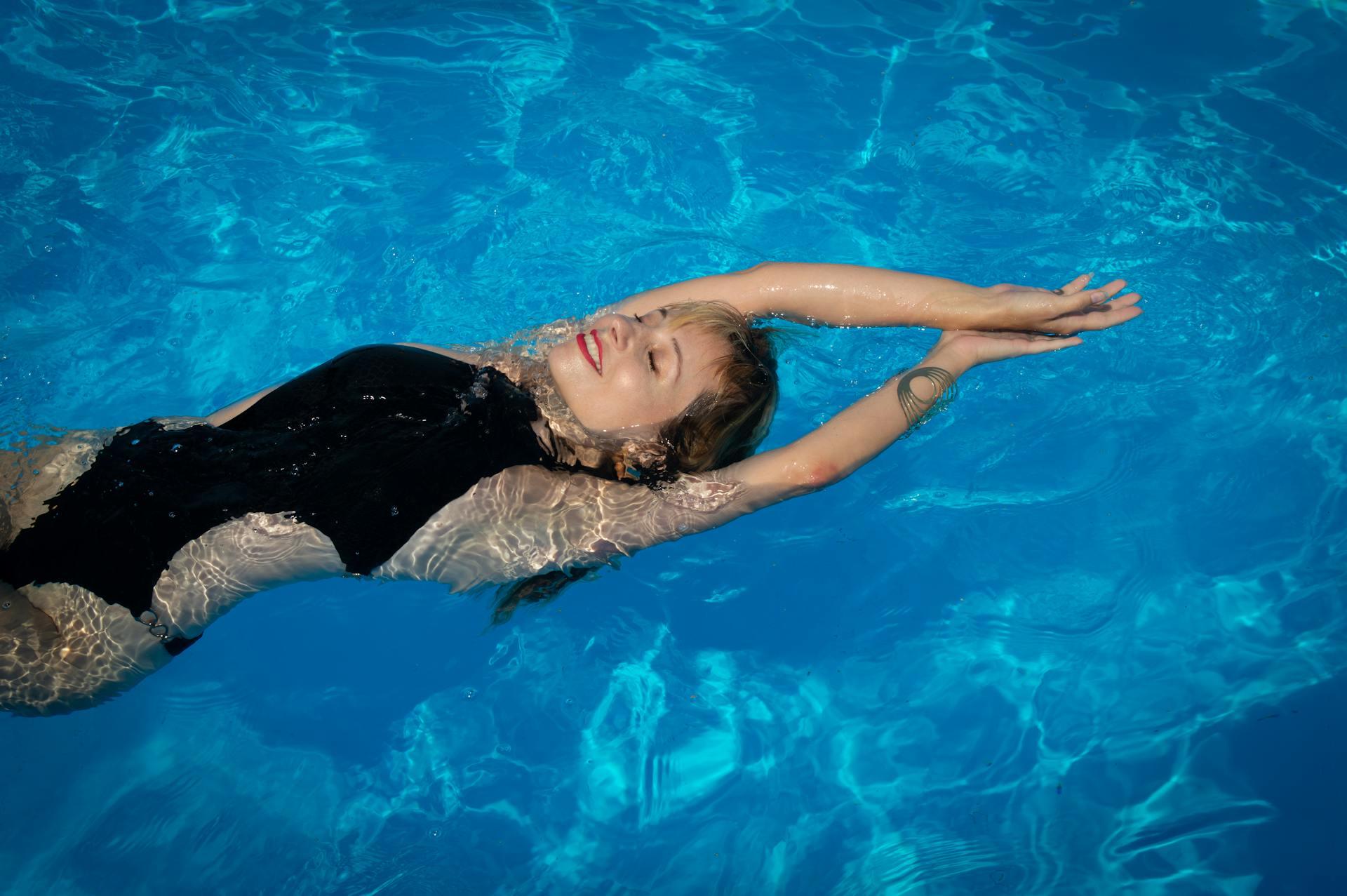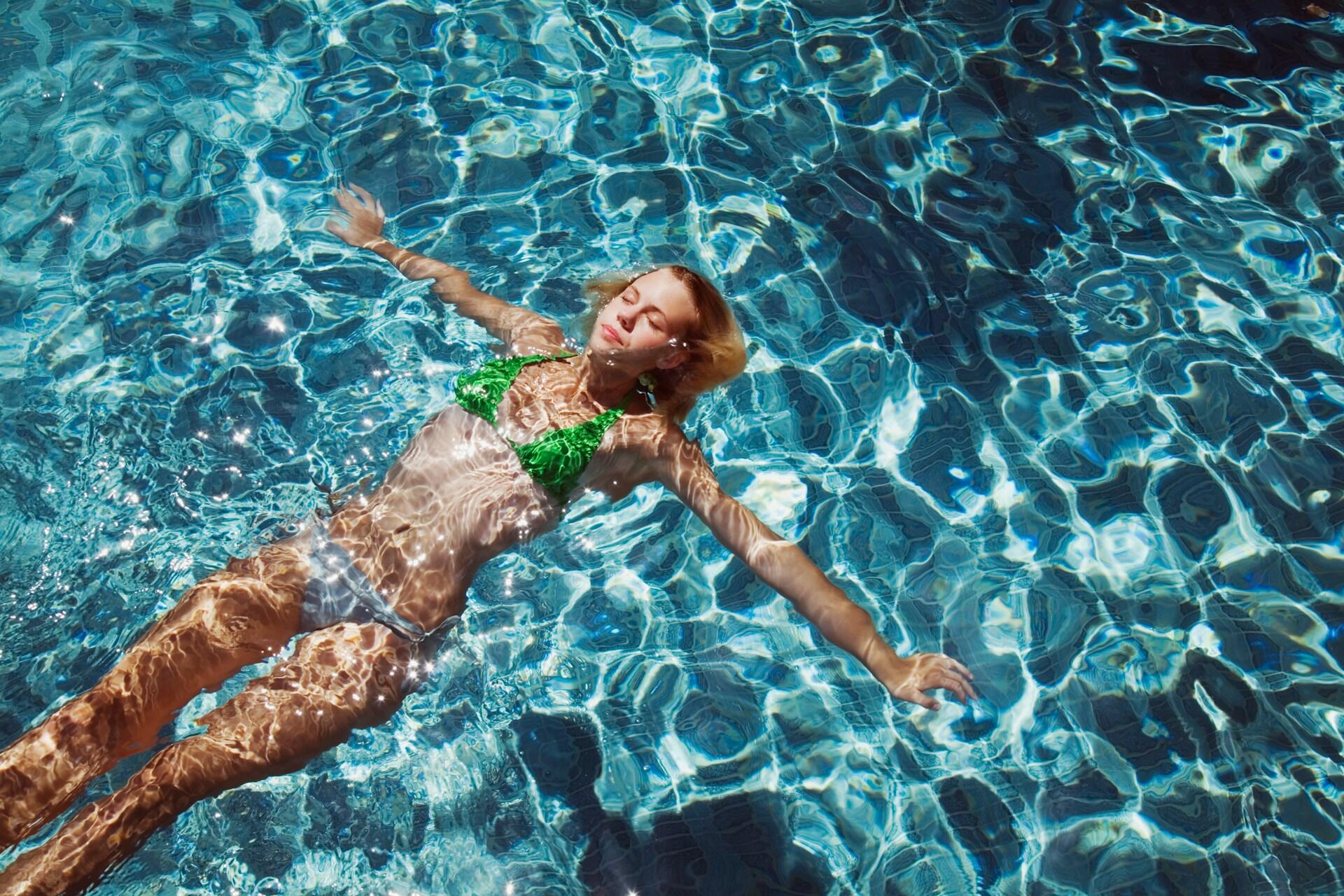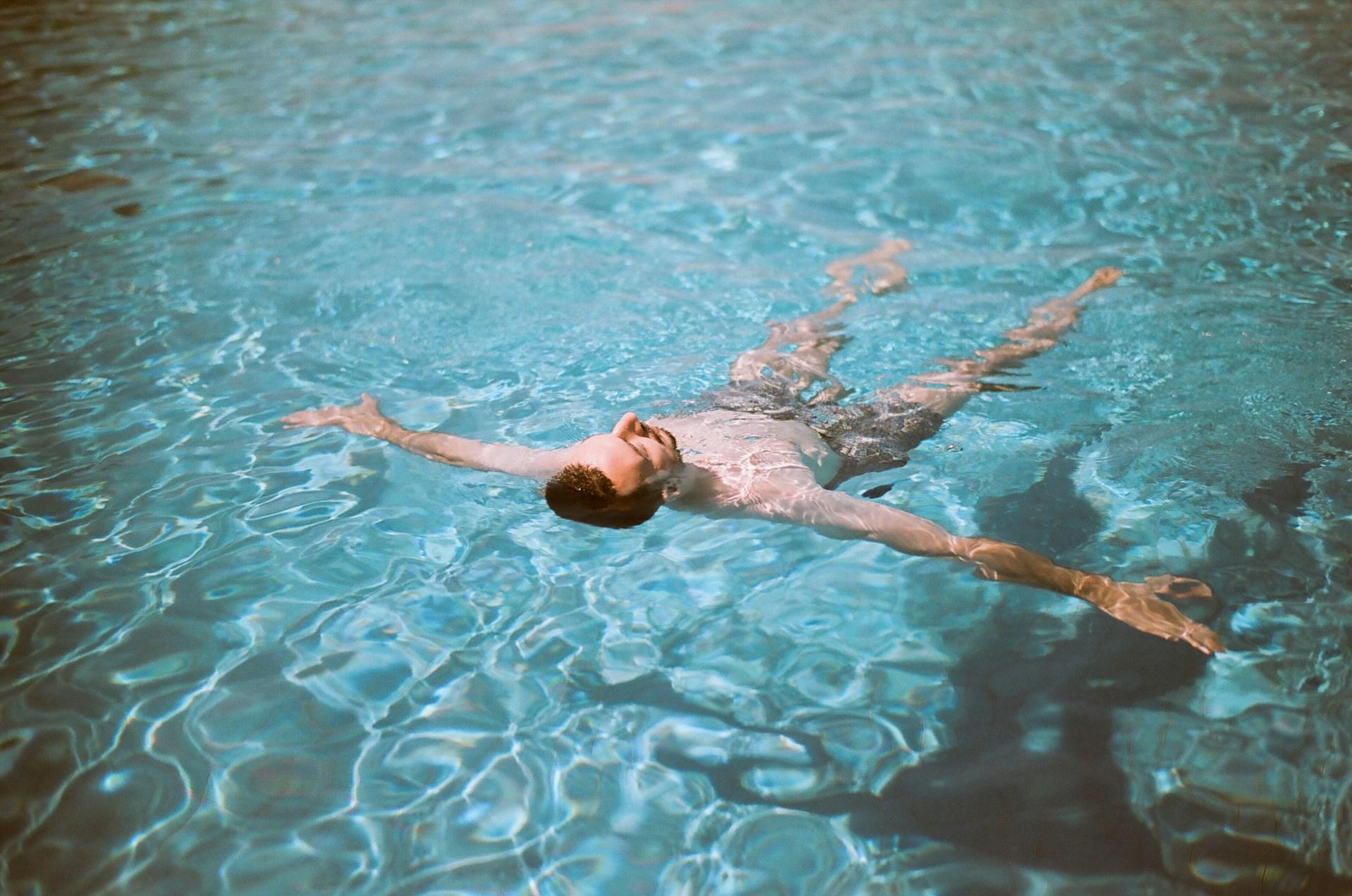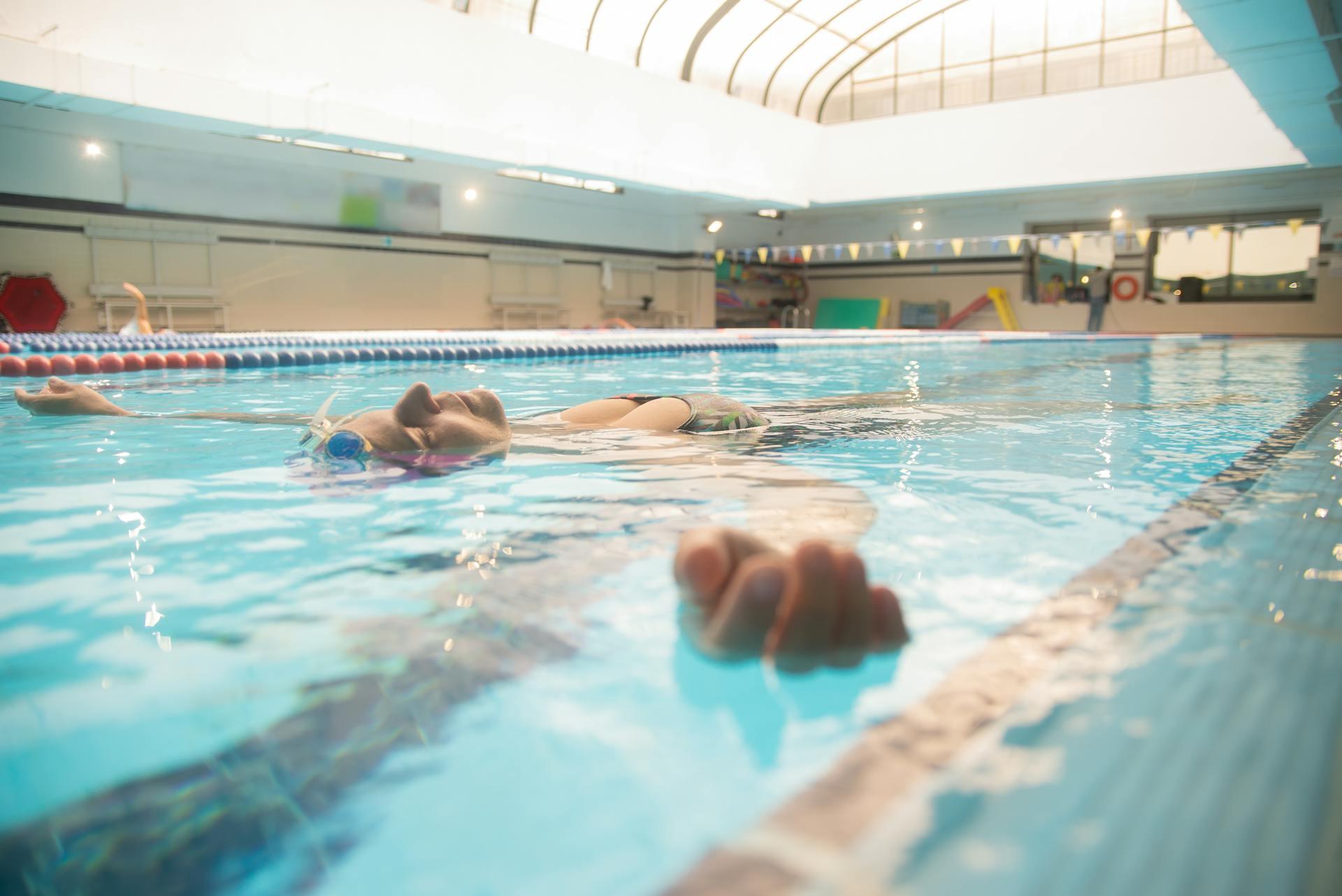Swimming, frequently described as one of the most adaptable and pleasurable types of physical activity, requires various skills, one of which is floating. Learning to float increases one's self-assurance in the pool and is an essential safety ability.
Swimmers must achieve a balanced relationship between their body and the water to float effectively. Not only is floating useful for water safety, but it also gives swimmers a sensation of calm and relaxation as they experience the weightlessness of stability. Furthermore, gaining proficiency in this ability allows one to engage in a wide range of water sports, from calm pool swims to more daring activities like diving and snorkeling or becoming a master in one of these most important swimming drills list
The path to becoming proficient in floating, whether via group classes or one-on-one coaching, is liberating and leads to underwater discovery and pleasure. So, let's get started and learn how you can start floating today!

How Do You Learn to Float for Beginners?
For newcomers, the first step in learning to float is to gain confidence and ease in the water. It's critical to feel comfortable and at peace, relying on the water's assistance.
Basic swimming abilities, including breath control, kicking, and arm movements, are frequently prerequisites. Furthermore, understanding water safety procedures improves learning. Achieving successful floating requires a combination of elements, including understanding float principles, controlling oxygen consumption, and assuming the correct body position.

How Do You Float Step by Step?
This part is essential. We try to break down the importance of each step and explain it quickly for you:
- Step 1: Breathe calmly and relax
Reaching a relaxed condition is essential to float. Muscle tension may affect your balance, which will make you sink. Breathe deeply and slowly to help your heartbeat and tensions calm down.
Feel the stress leave your body as you release the breath, starting at your shoulders and ending at your toes. Let go of any tension in your shoulders and neck, so your body can become flexible and loose. - Step 2: Body Positioning
To become afloat, your body must be positioned appropriately. Ensure your head and spine align while you remain flat on your back. With your arms securely by your sides, your body should form a straight line from your head to your heels.
Your equilibrium may be affected if you tense your muscles or arch your back. Keep your ears below the water's surface for ideal alignment, and tuck your chin slightly. - Step 3: Control Your flotation
The upward push water exerts on objects to help them float is buoyancy. Breathe deeply and let the air fill your lungs to optimize your buoyancy.
Feel your chest lift toward the water's surface as you release the breath, adding to the lift. Let the water assist you while you let go of your body and focus on keeping afloat without making an extra effort. - Step 4: Leg and Arm Movements
Your legs and arms are essential for keeping your equilibrium when floating. With your palms facing down, keep your arms relaxed and slightly submerged in the water.
Try putting your arms in various positions—for example, softly on your abdomen or out to the sides for support. Your legs should be stretched and naturally float with a slight knee bend. Avoid over-kicking or over-paddling, as this can throw you off balance. - Step 5: Seeking Harmony
Maintaining equilibrium is necessary to avoid rolling over or drifting away. Try to keep your body centered and in alignment, and adjust slightly as needed to be stable.
Since tension could disrupt your balance, pay attention to how you breathe and how relaxed you are. Use little, deliberate motions to keep yourself focused and avoid becoming sidetracked. You'll gain control over your floating posture with practice. - Step 6: Consistency and Practice
Be kind to yourself as you train since becoming an expert at floating takes time and effort. When comfortable, begin in shallow water and move up to deeper regions. Frequent floating practice will help you become more proficient and self-assured in the water.
Remain calm, take deep breaths, and concentrate on keeping your body in the correct alignment. You'll soon be gliding like a pro if you're persistent and determined.

What Is the Best Way to Float Easily?
It is possible to achieve a simple float by using specific strategies. It's essential to keep your breathing calm and relaxed so that your body can naturally float.

Try a variety of body postures to see which feels the most secure and pleasant for you. Additionally, to provide additional support while you work on your technique, think about employing buoyancy aids like flotation devices or pool noodles.
Set aside regular time in the water to progressively improve your floating abilities for consistent practice.
Consider consulting with certified swimming instructors in addition to practicing on your own. Superprof provides swimming coaching from qualified experts who can create courses specifically catered to your requirements and objectives. You can improve your floating and swimming technique, gain confidence, and become more proficient with their knowledge and assistance.
Why Do I Struggle to Float?
There are several causes for flotation difficulties, and each has a matching remedy:
Tension and Anxiety:
Chilling in the water can be challenging for many people, making them more tense and rigid when floating.
Solution: Before getting in the water, use deep breathing and meditation for mindfulness. Concentrate on relaxing your muscles; believe the water's buoyancy will hold you up.
Inadequate Body Alignment:
Not lining up accurately can make it more difficult for you to float efficiently.
Solution: Try various body alignments, ensuring your body stays long and straight, and your head is in line with your spine. Remember to keep your posture relaxed and refrain from tensing your muscles.
Loss of buoyancy Awareness:
Some people need help to learn about buoyancy and how it relates to floating.
Solution: To better comprehend buoyancy, spend some time in shallow water. Try controlling your level of buoyancy by experimenting with different breathing techniques, such as taking deep breaths to raise your buoyancy and exhaling to decrease it.
Fear of Water:
Feeling uneasy or afraid in the water can significantly affect your capacity to stay afloat.
Solution: In a secure setting, progressively expose yourself to water. Staying or paddling in shallow water are accessible places to start. As you gain familiarity, work your way up to floating exercises. Consider signing up for swimming lessons with a helpful instructor who can help you overcome your fear of the water and develop confidence.

How Do I Relax My Body to Float?
You must first relax your body to get a comfortable float in the water. The following easy methods will assist you in de-stressing:
- Deep Breathing: Slow, deep breaths are an excellent place to start. Breathe deeply through your nose, letting the breath fill your lungs and gently releasing the air through your mouth. As you exhale, try to relax and concentrate on how your breath feels filling your lungs.
- Progressive Muscle Relaxation: This method entails gradually tensing and relaxing your body's various muscle groups. Your muscles should first be tensed hard for a short while, then released to relax fully. Work your way through each muscle group from your toes to your head, concentrating on releasing tension with each relaxation.
- Visualization: Picture yourself floating on the water's surface with ease and buoyancy assistance from the water. Imagine yourself in a state of ease and peace where every breath brings you calm and relaxation. Practicing visualization can help your body and mind prepare for the floating sensation.
- Concentrate on Sensations: Take note of how the water feels on your skin and how the waves gently rock you. Give yourself to the water's assistance, having faith in its capacity to support you. Give up all concerns and distractions and concentrate on the here and now.
- Develop mindfulness: Pay attention to your body and breathing as you bring to the present. Consciously release any places of discomfort or tension that you find. Give up any worries or thoughts that come to mind and let yourself lose yourself in the floating experience altogether.
These relaxing techniques may make floating in the water more pleasant and joyful. Always practice self-compassion and let your body unwind at its speed. You'll eventually learn to float gracefully and quickly with practice.
How Do I Learn More About Floating?
Begin by putting the relaxation methods and body alignment that were previously covered into practice, then progressively increase your comfort level and competence.
Next, consider signing up for swimming lessons with knowledgeable teachers who can offer individualized advice and criticism based on your unique requirements and objectives.
Superprof is an excellent resource to find swimming instructors who will teach you how to float efficiently and safely. Superprof offers individualized instruction from knowledgeable tutors in a friendly setting so you may improve your floating abilities quickly. Also, if you are interested in learning more than floating, we recommend you read about the most important swimming strokes.
Superprof provides a practical and efficient solution for all swimmers, from novices trying to gain confidence in the water to seasoned swimmers looking to improve their technique. You can grow quickly, pick more insightful knowledge, and become more proficient and confident in your ability to float effortlessly.















